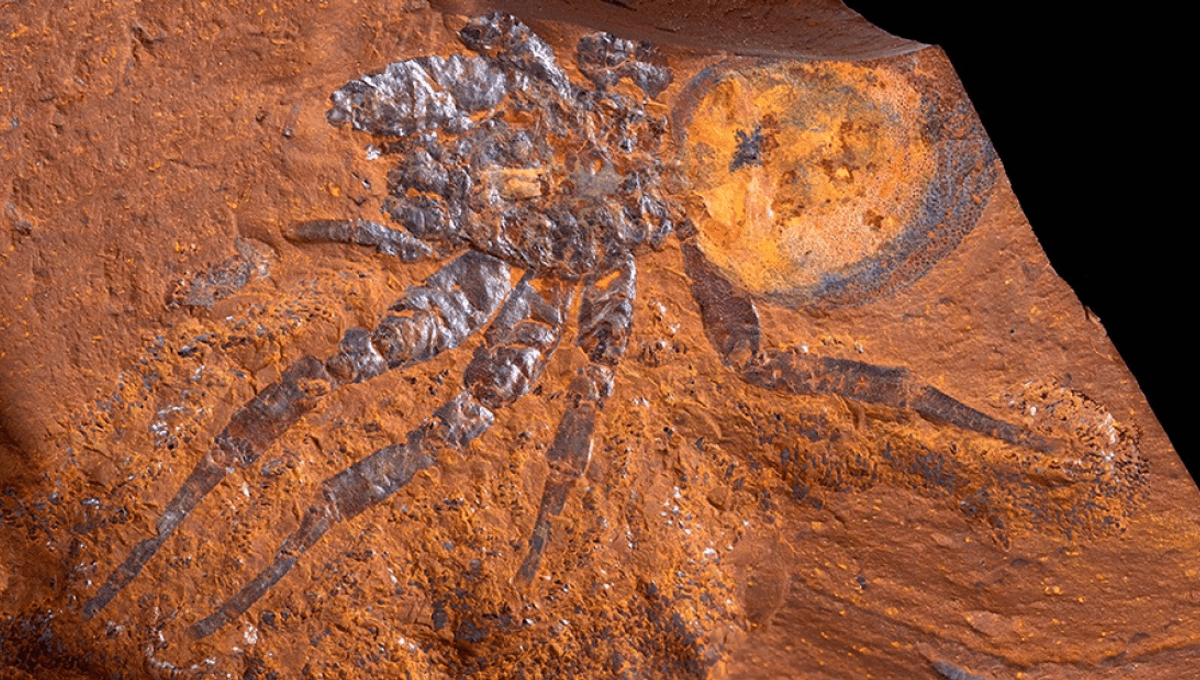
A spider bonanza kicked off in Australia during the Miocene at a time when a change in the climate dried up the landscape. This gave a group of spiders called mygalomorph spiders an opportunity to diversify, which would be really cool to see if we had many spider fossils to work from. The record is regrettably sparse, but scientists recently discovered a world-first fossil that comes from a new genus and species of arachnids.
It’s the first fossil of its kind ever discovered – and it’s massive. It dates back to the Miocene, a period that spans 23 to 5 million years ago, but our chonky trapdoor spider was only stamping around between 11 and 16 million years ago.
As the second-largest spider fossil ever found, it’s around five times bigger than similar spider species that still walk the Earth today. In terms of size, it’s comparable to a modern wolf spider at around 50 millimeters (2 inches) toe-to-toe.
Named Megamonodontium mccluskyi, its genus name is a reference to its nearest living relatives, a group of tiny litter-dwelling brush-footed trapdoor spiders from the genus Monodontium. The latter name is after Dr Simon McClusky who discovered the fossil in June 2020, and so got to live the dream of having a species named after him.
The astounding fossil is a type of brush-footed trapdoor spider that would’ve hunted by ambushing prey that made the big mistake of walking within reach of its camouflaged burrow. Its lifestyle could explain why it’s taken humans so long to retrieve a fossil like this one.
“Not only is it the largest fossilized spider to be found in Australia but it is the first fossil of the family Barychelidae that has been found worldwide,” said Queensland Museum arachnologist Dr Robert Raven in a statement, who was the supervising author of the study.
“There are around 300 species of brush-footed trapdoor spiders alive today, but they don’t seem to become fossils very often. This could be because they spend so much time inside burrows and so aren’t in the right environment to be fossilized.”
Its discovery will enable scientists to fill in some gaps in the knowledge of the evolution of spiders, and they’ve already learned a few things by taking an up-close peek at its finer details – which, remarkably, have stayed intact over tens of millions of years.
“Scanning electron microscopy allowed us to study minute details of the claws and setae on the spider’s pedipalps, legs and the main body,” said University of Canberra Associate Professor, Michael Frese. “Setae are hair-like structures that can have a range of functions. They can sense chemicals and vibrations, defend the spider against attackers and even make sounds.”
One big spider fossil. One giant leap for the evolutionary history of arachnids.
The study is published in the Zoological Journal of the Linnean Society.
[H/T: Cosmos Magazine]
Source Link: Astonishing 15-Million-Year-Old Spider Fossil Is The Second Largest Ever Found